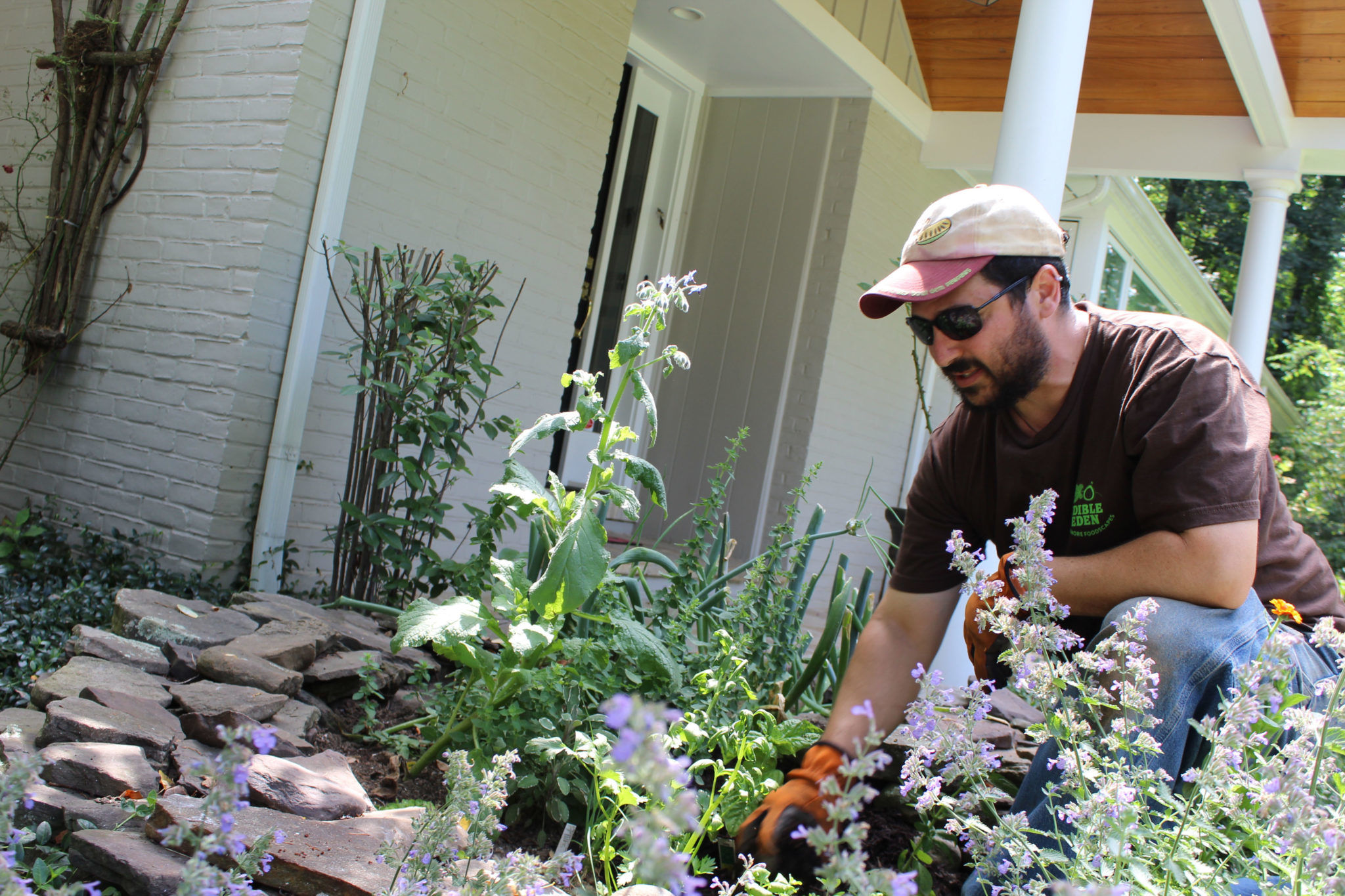Greens are the way to go for an autumnal garden season.
With the arrival of fall foliage and the High Holiday season, our mid-Atlantic vegetable gardens begin to wind down. Most warm season crops — tomatoes, cucumbers, peppers and squash — complete their growing season with the first frost and quickly turn into desiccated skeletons.
Hopefully, we planted our fall crops back in August. In October, the fall garden really starts to shine. Hearty greens and cabbages, cauliflowers and broccoli, along with crisp roots like carrots, beets, turnips and radishes, all step forward to occupy the space left by the summer crops.
It’s this autumnal flavor palette that should inform our holiday feasting. Sukkot is by nature a harvest festival, so what better way to celebrate the holiday then by eating produce that’s in season in our climate and grown nearby? If you don’t have a garden yourself, consider a trip to one of our many bustling farmers markets.
Once the broccolis have all been roasted and the radishes still out in the soggy garden have cracked, there is only one family of crops that accompanies us into winter: greens! We begin the growing cycle in our climate with spring greens around the time of Pesach, and bring it to a healthy and delicious close with the frost-sweetened greens of Sukkot.
Kales and collards just keep getting sweeter with every successive cold snap. Hearty greens come in many shapes and sizes, from the prehistoric-looking dinosaur kale to frilly Starbor to the sanguine Red Russian, all riffs on the same melody: Brassica family plants cultivated for their leaves.
As diverse as fall, greens are the methods of preparation. If your family members turn up their noses at the idea of “green stuff,” there are still lots of things to try. I’ve watched hardened kale haters see the light over crispy kale chips seasoned with garlic and salt, self-proclaimed “meat ‘n’ potatoes” men dive into rich, creamy greens gratin, and even the pickiest of eaters succumb to velvety stewed collard greens with beef bacon and apple cider vinegar.
As we harvest the final greens of the season here at Edible Eden, the last thing we do in our gardens is to plant garlic and cover it with straw mulch, a fragrant and notable seasonal milestone.
Garlic “seed” is just a bulb of garlic broken into a handful of teeth. Each tooth, sown in the fall, multiplies itself six to 18 times over the course of the next nine months … and becomes a full head. If any crop embodies the Jewish concept of “Pru Urvu” — be fruitful and multiply — it’s garlic!
The fledgling garlic plant sleeps beneath its blanket of straw all winter long. Next June, the plant will send up a swan-necked flower bud called a garlic scape; the best part of growing your own garlic. Removing the scapes and cooking them is not only a gourmet treat, it’s also our way of telling the garlic plant to make a big fat bulb and not to waste energy on showy flowers.
Planting garlic in the face of the oncoming winter months seems to me to be a powerful act of faith, and this is a time of year in which we Jews lean heavily on symbols of faith. We push the little emblems of hope into the cold, muddy soil, believing that under all the snow and ice they will be held and nurtured by the earth to grow and give fruit far in the future. Like our prayers of the High Holiday season, our garlic seeds are little time capsules guarding our hopes and dreams over the dark months and carrying them into next year.
[box type=”shadow”]Falls Greens Gratin
Mustard greens can be unpalatably hot when fresh, but a quick steaming tames their fire and turns them into a rich and addictive side dish.
1 pound mustard greens
1 pound Swiss chard
1 pint heavy cream
1 cup grated Parmesan
½ cup breadcrumbs
2 springs fresh thyme
Dash nutmeg
Dash cayenne
Salt and pepper
Olive oil
Clean the greens, remove the thick part of the stem, chop them coarsely. Then place them in a large pot with a little water and steam for 5 minutes. They will reduce to a fraction of their size.
Drain the greens and allow to cool for a few minutes. Next mix with cream, spices and half the Parmesan. Pour into a shallow casserole dish. Top with remaining Parmesan and breadcrumbs, drizzle with olive oil. Bake at 400 for half an hour or until top is crispy and brown but not burned. Serve with wild rice pilaf stuffed winter squash and fish or tofu.
[/box]
Joshua Rosenstein is founder of Edible Eden Baltimore Foodscapes LLC, a Baltimore-based business specializing in food gardens and edible landscaping. An Israeli-American farmer, chef, writer, permaculturalist and entrepreneur, Rosenstein is an Evergreen State College graduate. Before founding Edible Eden in 2014, he worked as a writer in the Pacific Northwest, served as staff at The Adamah Farming fellowship in Connecticut and as farm director at the Pearlstone Center in Reisterstown.





